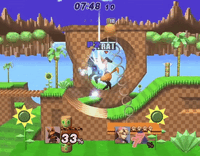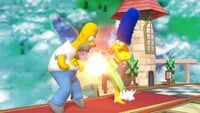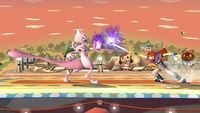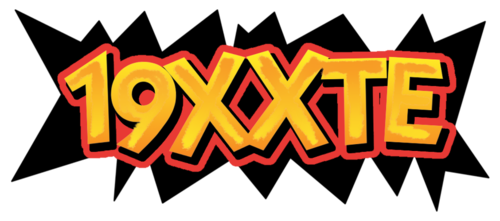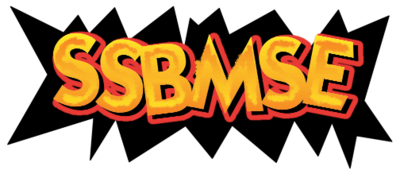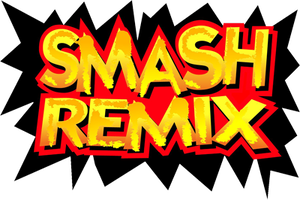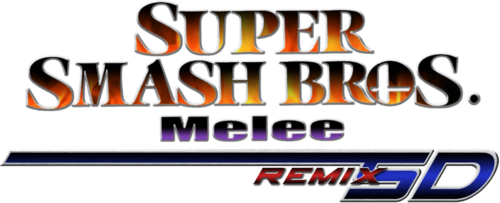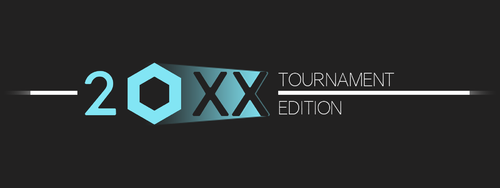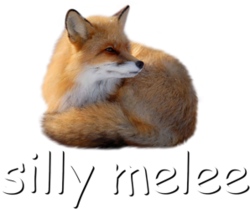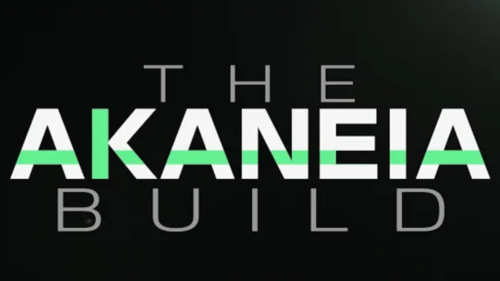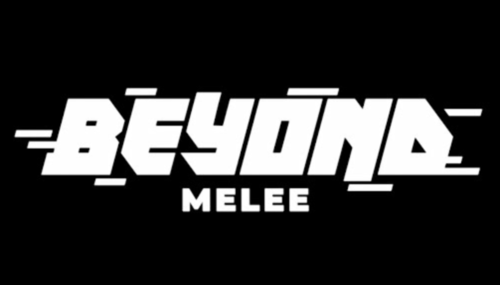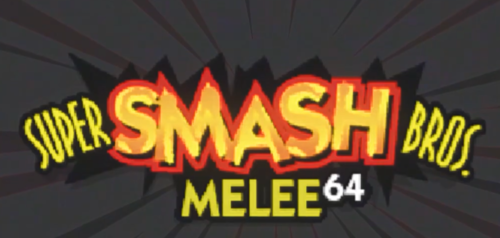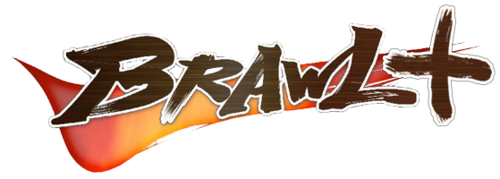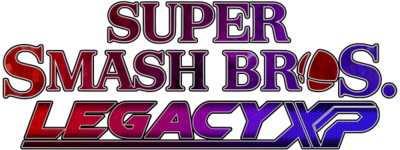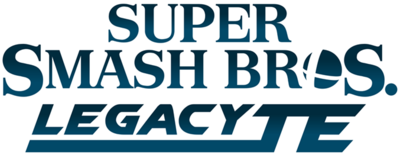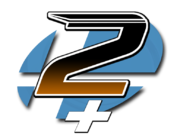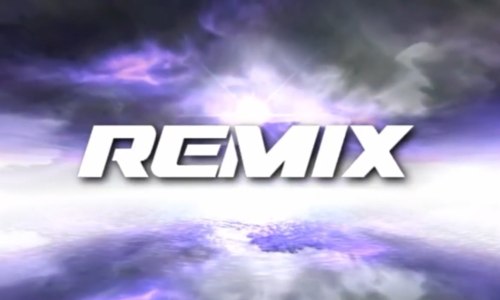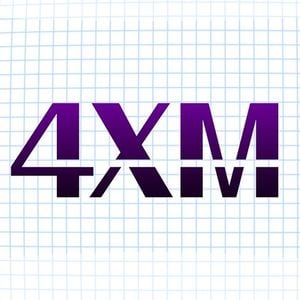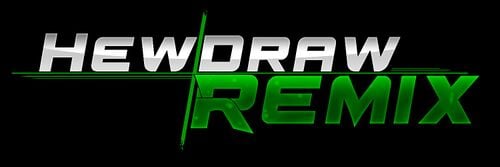| Welcome to SmashWiki! Log in or create an account and join the community, and don't forget to read this first! |
| Notices |
|---|
| The Skill parameter has been removed from Smasher infoboxes, and in its place are the new "Best historical ranking" and "Best tournament result" parameters. SmashWiki needs help adding these new parameters to Smasher infoboxes, refer to the guidelines here for what should be included in these new parameters. |
| When adding results to Smasher pages, include each tournament's entrant number in addition to the player's placement, and use the {{Trn}} template with the matching game specified. Please also fix old results on Smasher pages that do not abide to this standard. Refer to our Smasher article guidelines to see how results tables should be formatted. |
| Check out our project page for ongoing projects that SmashWiki needs help with. |
Gameplay modification
Gameplay modification, often shorthanded as mod, is a blanket term for unofficial hacks and code alterations that change one or more aspects of the original, or "vanilla" version of a game. The term "vanilla" comes from a common terminology featured in the computing world. Mods range from simple cosmetic changes to total engine and gameplay overhauls that result in the game functioning completely differently.
Overview
Specific changes to the game depend on the preferences of the developers, as well as their ultimate goal. There are a few different categories most mods fall into:
- Balance mods usually don't significantly change the core gameplay and apply buffs and nerfs to characters to reduce competitive inequality between characters.
- Overpowered mods are a variant of Balanced mods, giving every character absurd buffs so that they are all equally overpowered.
- Melee-inspired mods change the gameplay and movesets to be more fast-paced and technical like in Melee, sometimes adding mechanics such as wavedashing.
- Competitive mods don't change anything gameplay-wise, but add features for players to practice their skill and/or improvements for tournament play, such as improved training modes.
- New character mods that introduce new characters into the game with new 3D models, animations and movesets, either replacing another character or being a new addition.
- Skin mods add new Alternate Costumes to characters using File Replacement/Addition.
- Silly mods change characters or game mechanics in certain ways to result in humorous outcomes, like modifying characters such as Ganondorf to have their moves stretch to absurd proportions (which was likely inspired from the Gum Gum Fruit from One Piece) or having hitboxes from powerful moves such as Rest or Falcon Punch be active at all times, turning a character into a walking hazard. Silly mods often times have overlap with Overpowered mods.
The first attempts at modding involved Brawl, with such projects generally being viewed as novelties, such as palette swaps for characters and UI changes. Outside of this, forcing the Wii to load such mods was considered difficult, requiring use of the now-inoperable Twilight hack. The increasing complexity of game play mods and the discovery of the Smash Stack exploit, however, caused mods to develop considerably more attention with observers.
Brawl remains the most commonly modded game in the series, primarily utilizing either The Homebrew Channel or the Smash Stack exploit. Mods for Melee often also require the use of applications available for the Homebrew Channel. 19XXTE, a gameplay mod for Smash 64, requires patching a ROM image of the game. Mods for both versions of SSB4 involve the use of kernel exploit chains on their respective consoles primarily using Layered File System (LayeredFS) patchers to overwrite parts of the game's filesystem. Mods for Ultimate require a Switch console released before July 2018 to utilize a recovery mode exploit left over from the development phase of the console, enabling the use of code hooking and file replacement via the Skyline executable patch.
Given the nature of gameplay modifications, it is possible for them to be used for cheating in tournaments. One notable case is the "Super Pichu" scandal in the Ohio Melee scene, where a Smasher named Chaos won cash prizes in tournaments using a stealth-modded setup that buffed much Pichu's traits to win against top-tier characters. However, outside of this case, cheating through gameplay modifications in tournaments is extremely rare, mainly because of the difficulty in installing them onto consoles, and the logistics in having to play on the same modded setup in every round, a difficulty Chaos faced in his own tournament runs.
Since online play was introduced in Brawl, gameplay modifications have been used for cheating online as well. Hacking Giga Bowser to be normally playable is a common method across all online games, using his near-invulnerability to knockback to trivialise beating even highly skilled players. While Brawl did not issue bans for such behaviour, as of Ultimate, while possible, bans are issued. For a period of time, Giga Bowser could even be hacked into playable form on Project Slippi for play in Melee, though this has since been patched. Regardless, cheating does continue to occur on the platform, namely through the use of macros to make advanced techniques easier.[1] Thanks to improvements in moderation, though, they typically get banned quickly.
Stages
In addition to raw gameplay, other portions of the game may be overhauled by developers to further change gameplay. The changing of stages is among the more common ways to do this:
In 64
19XX modifies the stage selection screen to contain Battlefield, Final Destination, and Meta Crystal, stages otherwise unplayable in Versus mode. 19XXTE 's selection screen contains 11 instead of the original 9 slots for stages, and 19XXCE has 16 slots.
In 2018, modders found a way to change stages. At first only Hyrule Castle could be replaced, but later it became possible to replace all stages. The mod SSBMSE replaces most stages in the game with more competitive stages modeled after their appearance in other Smash games.
Smash Remix is the most popular mod for the game, and as of Patch 1.5.0, it includes five pages of stages, including stages from newer Smash games and brand new custom stages, as well as multiple "Remix" variants for stages.
An Ω form for Planet Zebes in Smash Remix
In Melee
While one of the less popular entries in the series for mods, some have been created over the years. SD Remix, released in 2015, features 3 pages of stages: One for the vanilla stages, one with 1-player mode-only stages, and one for newly created stages, with some inspired from other games.
Adding stages to Melee quickly escalated after the m-ex engine added the possibility to import custom stage models with separate slots, as well as custom high poly models over existing ones.
A mod for Melee that gives Yoshi's Island (64) a more neutral layout, with a flat base platform and the disintegrating cloud relocated to a space where it cannot be used for camping.
A backport of Smashville into Melee - to play into a "what-if" scenario of if Animal Crossing actually received major representation in Melee, small aesthetic changes have been made to more closely resemble Population: Growing! instead of Wild World.
In Brawl
Brawl is the most commonly modded game in the series due to Smash Stack exploit, which makes modding the game much easier to the average player. In these mods, it is common to new stages, often replacing others, that have been made by fans. It is also possible to use newly created slots on the stage selection screen or alternative stages that load when holding a specific button when selecting a stage.
Brawl- and Project M, for instance, replace the ordinarily over-sized Temple with a smaller, more condensed version. Stages with transformations like Castle Siege or Pokémon Stadium are often changed to stay at the most competitive form of the stage. Outside of this, unpopular stages might be entirely replaced with others, such as how Project M replaces the highly non-standard Mario Bros. with a rendition of Fountain of Dreams from Melee.
Legacy TE added stages with the design of stages used for competitive play for each stage, using their theme in background models and textures and playing the same background music, that load when holding the Start, L, or Z button. Legacy XP added over 700 new stages into the game using new slots on the selection screen, as well as variants when holding down specific buttons. Button Shortcuts to quickly select popular Project M stages have also been added. Smash 2 added all stages that were in Melee back into the game.
Outside of stage layout changes, some textures and tracks may be replaced, particularly in the case of original stages.
In Brawl-, the stage Temple has been significantly condensed compared to its vanilla counterpart.
In Project M, the same stage layout was used to make the Skyloft stage.
The Brawl stage Delfino Plaza remade with BrawlBox, adding many setpieces from Super Mario Sunshine usually absent from the stage such as the Grand Pianta Statue, and the red cannon to Pinna Park.
"1-to-1" stages, which replace the aesthetics of a competitive stage, but keep all geometry perfectly intact, are very popular in Project M and Project + modding - this stage skin changes Wario Land to resemble Waluigi Stadium from Mario Kart: Double Dash
In Smash 4
Creating new stages is possible in Super Smash Bros. for Nintendo 3DS/Super Smash Bros. for Wii U, but they will need to replace an existing stage or a stage's Ω form.
In Ultimate
Creating new stages is possible in Ultimate, though stage collisions have new properties that cannot currently be edited by the Smash 4 stage collision editor.
Any use of new stages in Ultimate will result in disconnection, or a possible ban depending on the user and how often attempts to go online happen.
As of 2023 it is now possible to add stage alts to the game, with a recent mod for Ultimate making a plugin that lets you add stages to the game without having to replace anything.[2]
A texture edit for Mushroomy Kingdom that removes the oft-criticised "fallen empire" theming.
A layout edit for Tomodachi Life to make it suited for competitive play.
Gameplay adjustments
Gameplay adjustments are changes to the engine, character movesets, and various other aspects of the game that are intended to be changed to a different vision for the game in question.
In 64
Smash Remix is one of the few mods for Smash 64 that would count as a gameplay adjustment. The original 12 characters and the mechanics of the game are unchanged, however, it adds 18 new fighters (alongside 10 new boss characters), 63 new stages (with about half of them being original), and many new gamemodes, like All Star, Multi-Man Mode, Cruel Multi-Man Mode and Home-Run Contest. Additionally, there are optional selections to change the gameplay significantly by adding elements such as footstooling, air dodging, air dashing, tripping, perfect shielding and ledge trumping.
In Melee
Gameplay adjustments are rare for Melee, and typically take the form of balance changes, improving lower tier characters or nerfing higher tier characters to remedy the game's notoriously large tier gap. SD Remix was the first balance mod to attempt to balance the entire game as opposed to experimental single-character mods, improving every character lower on the tier list than Peach, though it makes no changes to the base gameplay.
Beyond Melee is also one of the few mods for Melee that change the basic gameplay. Beyond Melee changes mechanics of the game, changes the balancing of characters to try and rebalance them, alongside adding new fighters. Characters like Bowser and Zelda, notable for being nigh unusable in the base game, were given many buffs in order to make them more viable, with some like Zelda and Ness receiving complete overhauls. There are also 7 newcomers to the mod, being Skull Kid, Fay, Wolf, Raichu, Shadow Mewtwo, Sonic, and Meta Knight.
In Brawl
Project M is one of the many modifications made to Brawl, due to the Wii's accessibility for modding. It's also the most popular modification for the game, due to it changing Brawl's engine to be more like that of Melee, alongside extensive rebalancing of the cast. Many fighters got new moves and overhauls, such as Samus gaining an ice beam and Wario gaining a side special based on the dash attack from the Wario Land series.
In Smash 4
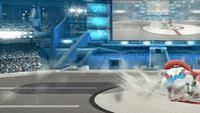
Super Smash Bros for Wii U has had its gameplay modded relatively extensively, but not to the degree that Brawl and Ultimate have, with multiple large mods attempting to replicate the appeal of Project M, though none were as successful as said mod or the eventual HewDraw Remix for Ultimate.
The 3DS game has been even less explored - while character and mechanical changes have been made, they have been limited, to the point where not even a Melee mechanics mod is known to exist.
In Ultimate
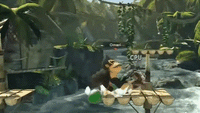
Gameplay mods for Ultimate first appeared in 2019, a year after the game's launch, with the cancelled and unreleased ProjectNX, which added techniques from Melee. Since then, Melee adjacent Ultimate mods have increased in popularity and accessibility, alongside mods that decrease the game's much-derided offline input lag. Character movesets can also be modified. HewDraw Remix has an improved netcode toggle, though the team behind the mod refrained from releasing it for vanilla Ultimate as using it against someone without the mod would be considered cheating, which could cause legal issues with Nintendo. [2]
Animations/models
In 64
For Smash 64, editing animations or models was once very limited. In 2019, Smash Remix became the first mod with such features: A Ganondorf model replacing Captain Falcon got newly created animations for his smash attacks, where he uses a trident weapon. Since then Smash Remix has added multiple other characters, some of which are completely original.
In Melee
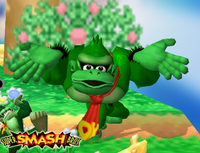
For Melee, editing animations or models was limited and rarely done, although the m-ex engine for Melee did make the process much easier.
In 2017, the Smash 4 modding tool Smash Forge became compatible with Melee, making it possible import new models over models over Melee characters [3]. Some small mods that replace a costume of a character have been created, for example, a Ryu model import over Captain Falcon [4].
In March 2019, the first custom animation on a Melee character was released: Falco got his Forward Air imported from Ultimate [5]
In SD Remix, a few characters got different animations for some moves, though this was done through recycling animations from different moves; for example, Pichu used its roll animation for its Dash attack [6], and Bowser used his aerial item down-throw for his Down aerial [7].
Beyond Melee would later add fully original animations for some characters, such as giving Dr. Mario his Down Air from Ultimate, Donkey Kong getting his dash attack from later Smash games, and Pichu getting a shine.
In Brawl
For Brawl, the tool BrawlBox easily allows modders to replace models and animations. Brawl mods usually feature a lot of new custom models and animations. A popular form of modding introduced with Brawl that would only become possible for earlier games much later is "model swaps", which outright replace an alternate costume with a model from another game, such as another character not yet in or outright inellegible for Smash, or an alternate model for the existing character from a game with a different art style, but without making any modifications to a character's animations or attacks.
In Smash 4
For Smash 4, there is a tool called Smash Forge for changing models and animations [8]. Mods that replace Fox with Wolf [9] and Dr. Mario with Popo [10], both using animations and attacks from Brawl, have been created. Additionally, those same two mods also exist for the 3DS game, alongside a port of Project +'s Knuckles.
In Ultimate
For Ultimate, there is a tool called StudioSB, which allows for model imports and animation imports. Add-ons for Blender were also made to edit some animation/model files. Material edits are done via ParamXML or CrossMod, to change properties like how metallic or bright an object appears. Brawlbox is also compatible with Ultimate animations & models.
Adding new characters
In 64

The first few public versions of Smash Remix added Ganondorf, Young Link, Falco and Dr. Mario to the game, working however as replacements for Captain Falcon, Link, Fox and Mario respectively. In version "0.9" released in October 2019, the dev team of Smash Remix managed to give those characters their own roster slots, restoring the full original cast.
As of version 1.5.0 of Smash Remix several characters have been added in addition to the original 12, with backports from future entries including Ganondorf, Young Link, Falco, Dr. Mario, Dark Samus, Wario, Lucas, Bowser, Wolf, Mewtwo, Marth, Sonic, Sheik, King Dedede, and Banjo & Kazooie, as well as brand new characters like Conker (from Conker's Bad Fur Day), Marina (from Mischief Makers) and Goemon. Some characters, such as Giga Bowser, Mad Piano, Super Sonic, Peppy, Slippy, Ebisumaru, Dragon King, and Metal Luigi have also been added as playable boss characters, and balance-changed versions of characters from between the different regional versions of Smash 64 are available, as well as Fighting Polygon Team variants for all new non-boss characters.
In Melee
As of 2021, Melee also had mods created for it using the m-ex engine. This has been shown off in the Akaneia Build adding Wolf on December 25, 2021, followed later by Diddy Kong, Charizard, Lucas, and Sonic.
Another mod, Beyond Melee, also added new characters to Melee, including Wolf, Fay, Raichu, Shadow Mewtwo, Skull Kid, Meta Knight and Sonic.
In Brawl
In 2013, the addition of characters has become a possibility for Brawl mods. Project M notably added Roy and Mewtwo as playable characters in version 3.0 after the absence of the duo in Brawl.
In 2015, a build called Project M Ex was created, mainly by hacker PyotrLuzhin/Петр Лужин, that works as a template for builds to easily add new character slots. It included all characters present in Project M, as well as Ridley. All future builds that were based on Project M and added new characters are based on this template, and mods like Brawl- switched to this template reimplementing their changes.
Brawl- added Pichu, Roy, Mewtwo, and newcomers Ridley and Waluigi to the game. Newer mods based on Project M like Legacy XP add even more characters into the game with new movesets, including backports of characters from later Smash games like Cloud and Banjo & Kazooie.
In Smash 4
There are currently no known means to add playable characters to either version of Smash 4 without replacing another character. A mod called 4XM added Chrom by giving Lucina extra costumes, but they both share the same slot.[3] Another method is to replace a Fighting Mii Team slot with an existing character and then replace that character's slot with a modded character, though this method tends to have more limitations and bugs.[4]
In Ultimate
Adding new characters to Ultimate the same way 64, Brawl and Melee did isn't currently possible. However, the mod Super Smash Bros. Ultimate: Championship Edition "added" Akuma from the Street Fighter series in its version 1.00 update released on July 1st 2021, with entirely unique moves and Final Smashes. Despite this, and without file and directory addition being possible during that time, the developer used a method called "model stacking" over Ryu and used various code edits to deal with name checks and mesh visibility toggles.
While proper fighter addition still isn't possible as of 2024, functionally close alternatives have been discovered. Due to Arcropolis supporting file and directory addition, it is possible to increase a fighter's costume count past 8 and add more. These added slots can also have their own UI, names, sound effects, voice clips, animations, and even classic mode routes. There is also a Skyline plugin (still in closed beta) that can redirect a fighter's added costumes to have their own new slot on the Character Select Screen. It is also possible to give certain costumes their own frame data within their moveset through various code edits. This method is widely considered to be the closest thing to "fighter addition" in Ultimate; however, it isn't flawless and can still suffer from problems.
Notable gameplay mods
Super Smash Bros.
19XX
19XXTE (Tournament edition) is the first and most notable of gameplay mods involving Smash 64. Similar to the concurrently developed 20XX, 19XXTE is intended to assist players in training their skills for professional play in Smash 64, as well as adding various improvements for tournament play, such as a match timer, and allowing for access to the ordinarily unplayable stages Duel Zone, Final Destination, Meta Crystal and cloudless Yoshi's Island. The mod has notably seen use in most Smash 64 tournaments since Hitstun 3 in late 2015, including GENESIS 3, the first tournament with over 200 participants.
19XXGE (Genesis edition) is more or less identical to 19XXTE and got its name from being designed for the GENESIS series.
19XXCE (Complete edition) has more content, such as a bigger stage selection screen including all 1P only and unplayable test stages, and an enhanced training mode with options for hitbox display, color overlays, flashes on Z-cancel, the option to set the percentages, and more.
SSBMSE
SSBMSE (More Stage edition) [11] is a modification with the goal to add more tournament-viable stages to the game. Version 0.3 was released in April 2019, and features Kalos Pokémon League, Smashville, non-transforming Pokémon Stadium, and Final Destination, in addition to Dream Land, Yoshi's Island, Battlefield, Final Destination, and Meta Crystal. Since it was merged into Smash Remix, it won't be developed any further.
Smash Remix
Smash Remix is a mod with the goal to expand Smash 64 with new characters, stages, etc. while staying true to its core gameplay. New mechanics from the other Smash games, like wavedashing, are added as optional bonuses. The vision involves having tournaments where the new characters are pitched against the old ones, with most of the newcomers being viable against the originals, alongside a set of more powerful boss characters.
Incorporating every feature from 19XXCE and SSBMSE, the mod adds 18 regular characters (returning and newcomers) as well as more than 60 stages. It also add many new game modes, as well as a plethora of customisation options for those modes, making the mod a robust single-player experience and multiplayer competition game alike.
Super Smash Bros. Melee
Melee: SD Remix
Melee: SD Remix is the first of notable of hacks involving Melee. SD Remix holds some niche appeal amongst some devoted Melee players. The concept behind Melee: SD Remix can be compared to that of Balanced Brawl; both mods avoid making changes to the game's base engine in favour of buffing and nerfing individual attributes of characters to make the game more balanced. Some stages have also been altered as to allow for better competitive gameplay. The development for SD Remix continues today, but appears to have slowed down, with the last version being from 2015.
As of July 5, 2015, a version loadable from a memory card, entitled SD Remix Lite, was released; it is also the only memory card mod that can run with full features on all versions of Melee, including NTSC/NTSC-J 1.00, 1.01, 1.02, and PAL, and even though it is named version 3.2, it still contains all fixes of SD Remix Full 3.2.1.
20XX
The 20XX Melee Training Hack Pack does not feature any true modifications to Melee's gameplay; rather, as its name suggests, it modifies Melee's overall user interface to allow players to train their skills for professional Melee tournaments. Hacks, for instance, can allow players to flash differing colours to allow for practising of L-cancelling or allow for players to view hitbox data for the game's various characters. Other, minor hacks are also available, allowing for players to modify stages, use PAL versions of characters, or use unique costumes.
An extension of the 20XX Melee Training Hack Pack is the 20XX Tournament Edition. Developed by professional Melee player Dan Salvato, 20XX Tournament Edition features various hacks to streamline the mod's performance in tournament use, as well as other minor improvements, such as widescreen support; it also uniquely runs via hacked save data on a GameCube memory card, allowing for it to be spread through the standard software found on either the GameCube or Wii.
Silly Melee
Silly Melee [12] is a modification of Melee with the purpose of making every character overpowered. Made by Alpharad and MagicScrumpy with assistance from Casey O'Rourke, it is self-described on its official website as "Very, very silly. Characters do things that they never should have been able to do." Version 1.0 was released in December 2015.
The Akaneia Build
First released on January 20th, 2021, The Akaneia Build is a major mod that is comparable to that of Smash Remix for the first entry in the series, albeit for Melee instead, as it too takes advantage of being able to add content to the original game without replacing any, which was a brand new discovery for Melee upon its creation. It also features online play, using an already existing netcode mod. Also like Remix, the mod focuses heavily on the competitive side of things while also being fully accessible to more casual play.
The mod was first released with adding back in all stages from Smash 64 that weren't already present in the base game except for Sector Z, including Metal Cavern. A brand new stage added was a volleyball court, which also became a new game mode complete with scoring. It also added various new alternate costumes for the roster, many of which were based on color swaps added in later games of the series, such as Mario's pink and cyan alternate, the white alternate for Mr. Game & Watch, and yellow color swaps for Fox and Link. Some costumes were new, such as Pichu wearing the hat and backpack of the male trainer from Pokémon Gold and Silver. A small update was released shortly after, adding Mario wearing his cape as another new costume. The most notable addition to the base release was Wolf O'Donnell being added as a newcomer, with his appearance being based on how he looks in Star Fox 64 and the intro to Melee, and he only has Japanese voice clips, much like Fox and Falco's appearances. Wolf mostly replicates his gameplay from the regular series, although his connections to Fox and Falco can be more clearly felt here. He especially shares many noticeable assets with Fox, due to Wolf blatantly being a modded version of him in terms of moveset and attributes; additionally, Wolf's size and proportions are much closer to Fox's than how they normally are; the two even share his idle animation. Wolf's playstyle and strategy is also heavily affected due to Melee's physics. Wolf comes with his own Break the Targets stage as well; however, he currently he lacks victory animations, with a win by him resulting in an immediate cut back to the character select screen. The announcer does not say Wolf's name, but instead says "Bonus character" when selecting him.
Version 0.8, released on December 25th, 2021, added Diddy Kong and Charizard, with the former being based on his appearance in games like Diddy Kong Racing and Donkey Kong 64, and the latter being based on its appearance as a Poké Ball Pokémon in Melee itself. Charizard's moveset closely matches its appearance in Smash 4, with Flare Blitz as its side special (though it is labelled in-game as Dragon Rage), and Rock Smash as its down special, though it keeps its forward aerial from Brawl.
Version 0.9, released on April 7th, 2023, adds Lucas and Sonic the Hedgehog, with the latter's appearance being based on his design first seen in Sonic Adventure, and his moveset being slightly altered to reflect such by replacing Spin Dash with the Light Speed Dash. Four more stages were added, being Luigi's Mansion, Delfino Plaza, Village (Smashville), and Green Hill Zone. Reflecting the release time of Melee, the Village takes its design from the Nintendo 64 Animal Crossing rather than Wild World, and Amy replaces Silver as a background character in Green Hill Zone. In addition, all newcomers now have their own trophies, as well as a new Kirby Hat 6 trophy featuring Kirbys with Wolf's, Diddy Kong's, and Charizard's Copy Abilities and a Kirby Hat 7 trophy featuring Kirbys with Lucas' and Sonic's Copy Abilities. Trophies of Tails, Knuckles, Amy, Super Sonic, and Shadow were also added.
Beyond Melee
Beyond Melee is a Melee mod made after the release of The Akaneia Build to further expand Melee's roster and other content without replacing any, even using the same Wolf and "minigame" stages from Akaneia Build. However, unlike Akaneia Build, which simply adds content to Melee while leaving everything else unchanged (much like Smash Remix for Smash 64), Beyond Melee changes original assets in the game. In addition to aesthetic changes to menu design, gameplay-wise, a chunk of the original cast and stages are remixed. This is done to make the roster more balanced and competitively viable and stages to be more tournament-friendly. Said changes are done in accessible ways, though, and can still be enjoyed casually. There are still stages that exist purely for fun, and ones changed competitively are done in self-aware and humorous ways, such as having Whispy Woods burnt down on Dream Land 64 so as to not blow on fighters.
Most veteran fighters received minimal changes, usually just a couple of new moves and fixes in frame data. Lower-tier characters, such as Bowser and Zelda, however, received many more changes to buff them. Bowser, for example, received tremendous buffs in speed and frame data. He also gained an entirely new neutral special and down air. Zelda received similar changes, but also has an entirely new warrior princess-like attire, resembling her appearance in Hyrule Warriors. In the first public release, Luigi, Yoshi, Ness, Ice Climbers, Kirby, and Mr. Game & Watch were not yet playable, most likely due to also receiving large overhauls. However, their silhouettes could be seen on the character select screen, with Luigi having what appears to be a Boo alongside him, implying his moveset would have many more references to Luigi's Mansion.
The mod adds five newcomers to Melee, being Skull Kid, Fay from Star Fox 2, Wolf, Raichu, and Shadow Mewtwo from Pokkén Tournament. Skull Kid uses Ness as a base, but has an entirely unique moveset featuring magic and dark energy balls that hover around him. Wolf is the same as he is in The Akaneia Build, but with a minor appearance change. Fay, like Wolf in these mods, is also clearly an edited version of Fox, though has an even closer resemblance to him than Wolf. Fay gains unique attributes by having the Homing Launcher from Star Fox: Assault in her moveset. The launcher can ignite powerful close range explosions and also gives her a side special similar to Snake's Remote Missile. Raichu is a heavyweight compliment to its pre-evolutions, moving much slower but having much more powerful electric attacks than the other two. Shadow Mewtwo is based on Mewtwo, but has many brand new moves and even a unique gimmick of building up a power meter.
The second publicly released build of Beyond Melee was released on March 15th, 2022, entitled "Demo 2" and featuring the revamped return of Ness, a significant revamp for Raichu, and the additions of Sonic the Hedgehog and Meta Knight, as well as even more stages, costumes, and balance changes.
Super Smash Bros. Melee 64
As the name suggests, Super Smash Bros. Melee 64 (often just referred to as "Melee 64") is a mod with the goal of making Melee more like its predecessor, Smash 64, and was first made available in July 2019. A notable feature of the mod is the ability to choose between playing it with Melee's regular mechanics and techniques, or a unique version that combines the gameplay styles of Melee and 64. It also contains completely remixed stages, alternate costumes, and menus reflecting 64.
Turbo DX
Turbo DX is a mod of The Akaneia Build released on September 28th, 2024, comprising of all the content from The Akaneia Build and the addition of more content. There are currently three new characters added in the mod, those being Daisy, Wario, and Shadow. Unlike The Akaneia Build, all characters that weren't in Melee have unique announcer calls done by the game's original announcer, Dean Harrington provided by David V. Kimball. Lucas had his design changed to match how he would have looked in the cancelled EarthBound 64. Many veterans received new alternate costumes and more stages have been added such as Sector Z, Castle Siege, Mine Cart Madness, Bowser's Castle, Ecruteak City, Celestial Valley, a Melee version of Small Battlefield, Wario's Castle, and Radical Highway.
Super Smash Bros. Brawl
Balanced Brawl
Balanced Brawl is unusual amongst Brawl mods in that it does not significantly alter the core gameplay physics of Brawl. In its attempts to make the game more balanced, it instead primarily focuses buffing and nerfing all the characters, as well as adding some universal nerfs, such as altering how ledges work in order to combat planking. In addition to its various character tweaks, some of the stages were also changed, though not to an extent seen in other mods; most stage hazards are still present, but instead are either weakened or occur less often. Likely as a result of its lack of immediately visible changes, Balanced Brawl was unable to find the popularity of other mods for Brawl, though it did attain a small niche composed of those who opposed the changes made by Brawl+.
While not officially abandoned, the last notable update for Balanced Brawl, version 3, was released in 2010, with only a 2011 bugfix patch for PAL regions being released since then. Because of the effectively ceased development, Balanced Brawl is generally considered to be antiquated. As its last version was based on the Brawl metagame from 2010, some notable developments are not reflected in Balanced Brawl's changes, such as the emergence of Olimar as a top tier character (who saw no nerfs by the final release of Balanced Brawl), as well as the gradually decreasing dominance of Snake (who saw the most nerfs besides Meta Knight).
Brawl+
Brawl+ was the first notable gameplay mod available for Brawl, and it also became the first mod to develop its own tournament scene, with it semi-frequently appearing as a side event at Brawl tournaments during its heyday in 2009 and early 2010. The mod featured multiple tweaks to gameplay that would later be seen in most future mods; in addition to changing the physics engine, some stages were changed in order to make them fit the guidelines for legality within tournaments, and individual characters had various attributes nerfed and buffed in an attempt to reduce competitive inequality between characters. Despite popularising the concept of modifying the base gameplay of Brawl and its presence as a side-event at some Brawl tournaments, Brawl+ was immediately controversial to some members of the community, due to the fact that most of its changes were seen by many as solely attempting to make Brawl play exactly like Melee, particularly in regard to changes to individual characters, such as Fox and Jigglypuff having become altered to make them almost identical to their Melee counterparts. Brawl+'s own staff became estranged and antagonistic towards each other because of controversies over the development and ultimate goal of the mod.
Development of the mod ceased in 2010, with version 7.0.3. Most of its staff moved onto Project M, a mod with a similar design philosophy to Brawl+, but with a more concentrated and slightly different goal. Today, Brawl+ is mostly viewed as a curiosity amongst Smashers who are interested in seeing how the hacking scene of Brawl first started.
Brawl-
Brawl-, like most other Brawl mods, attempts to change the cast and physics of Brawl in order to make the game more balanced. In a playful jab at the then-active Brawl+ and its carefully considered balancing philosophy, the changes to the characters and physics in Brawl- are intended by the developers to be absurd and over-the-top in comparison. Brawl-'s character design can be boiled down to the mantra "if everyone is broken, no one is". Hitstun, for instance, has been drastically increased as to allow for combos that are much easier to perform than either Brawl or Melee, and all characters now have the ability to wall jump. In addition, all characters have been buffed to ridiculous levels and each given a plethora of new, very powerful options; Ike, for instance, can charge Eruption and store it, allowing for a powerful kill move. The mod is noteworthy for being an early major Brawl mod aimed towards casual players (although competitive balancing is still of importance to the developers).
Brawl- enjoyed considerable popularity and attention when first released in 2010, and it became the most popular Brawl mod among the fanbase in this time, due to its more obvious changes compared to Balanced Brawl and its less controversial changes compared to Brawl+; the game was even featured as a side-event at some Brawl tournaments, such as at Apex 2010. As Project M got farther into development and started releasing more complete builds, however, Brawl- would become eclipsed in popularity, though it still has a large, devoted cult following. Despite the diminishing popularity and lack of representation at tournaments, development for Brawl- has received updates as late as February 2023.
Project M
Project M can be seen as a spiritual successor to Brawl+, especially since many Brawl+ developers moved on to work on Project M. Project M features many of Brawl+'s previous physics changes, but was able to distance itself from the previous mod and its related controversies by giving more thorough changes to all characters. Of all Brawl gameplay mods, Project M remains the most popular, due to its altered physics engine that makes it play similarly to Melee and thorough nerfing and buffing of all characters in the game; although aimed primarily at hardcore players as opposed to casual gamers, Project M's considerable "fanservice", such as the inclusion of Roy and Mewtwo, new palette swaps that reference more video games than Brawl's standard selections, and other such interests have allowed it to reach popularity amongst such players. Project M's popularity led to it eventually becoming a notable side-event in tournaments, and it later developed its own distinctive tournament scene, with Apex 2014's Project M event attracting even more entrants than Brawl's.
Newer revisions of Project M had other additions to the game, such as added multiplayer modes, new maps, and a new announcer, with the last major revision being 3.6. While intended to include several completely new characters in its next revision, as well as further buffs and nerfs, development on Project M ceased on 1 December 2015, due to concerns over the legality of the mod. Despite this stoppage, Project M continues to maintain a devoted following.
Project+
Project+ is a modification of Project M 3.6 (based on Legacy TE) with the aim to improve the balance among the cast by making small moveset changes to all or most characters. It is intended to become tournament standard. Development started in 2018, and version v1b was released in April 2019.
On March 17, 2020, Project+ 2.0 was revealed, with additional content, such as new modes, revamps to some characters' movesets such as Bowser getting a new fireball attack and Charizard getting Thunder Punch, and the reveal of Knuckles the Echidna as the only new playable character beyond what Project M had. Future Updates, up to 2.3, included balanced changes, new UI, and more stages.
Project+ Tournament Addition
Project+ Tournament Addition is a tourney-viable modification of Project+ that aims to add new content while also keeping core, fundamental gameplay unmodified. It features an expansive variety of tourney-safe alternative stage skins, costumes, and quality of life features. This includes over 1,000 character costumes to choose from with each character having 20 costumes, and 4 team color options. Over 1,000 stages that are all alternate skins of existing competitive layouts, featuring tournament layout makeovers for all existing stages from Project+, Legacy TE, Project M, Brawl, Melee, and 64; as well as many brand new stages designed for this mod. The project also showcases a new code menu made with the mod in mind, that allows players to train their skills for professional tournaments. For example, there is a feature called actionable overlay that allows you to see when you are actionable during or after an attack, as well as a combo trainer tool that allows you to set your opponent's position and practice follow ups. Other new codes made for the project include a Random 1-1 code that allows the player to select a tournament stage of their choice, and be taken to a random variation of that stage. This is often used with the Endless Friendlies code shown in LegacyTE to allow players to play on many visual takes on the same stage layout for as long as they want. Many new modes that aren't seen in Project+ are featured here which include Big Head Mode, Random Angle Mode, Legacy XP's War Mode, and a preliminary version of Retro Mode replacing Clear Mode in the Special Versus menu.
Version 1.0 was released on March 27, 2022 after the tournament Project M Theatre.
Legacy XP
Legacy XP is a modification of Project M 3.6 that includes more characters, 700+ additional stages, and new modes. While the characters from Project M were mostly unaltered (Yoshi and Link received some non-PM 3.6 moveset-fixing edits, and Snake gained the ability to walk while using his box taunt), 10 more fighters were added: Young Link, Pichu, and Dr. Mario returned from Melee, and Ridley, Waluigi, Geno, Lucina, and Metal-Sonic were added in the beta build released in September 2016. Shadow and Mage Ganondorf (inspired by his Ocarina of Time appearance) followed in version 2.0 Full in May 2018. Version 2.1, featuring some balance changes, was released in March 2019.
Just like the aforementioned Legacy TE, development ceased on March 13, 2020 with an announcement on their website [13] and removal of all downloads. Project co-lead David V. Kimball stressed no Nintendo involvement in the shutdown, and directed further questions to Ryan Morrison [14], similar to the Project M shutdown.
Legacy XP Lite is a combination of Legacy XP with some of the more competitive-friendly stages from Legacy TE, greatly reducing the number of stages and the mod size from over 5 GB to under 2 GB. Version 2.1 was released in March 2019.
Legacy TE
Legacy TE is a tourney-viable modification of Project M 3.6 that aims to add new content while also keeping core, fundamental gameplay unmodified. It features a variety of tourney-safe alternative stage skins, costumes, and quality of life features. This includes shortcuts to edit a players' controls without leaving the character selection screen, an improvement to character files to reduce crashing likelihood, and an improved menu interface. A debug menu made for the mod allows players to train their skills for professional tournaments. For example, there is an option to show DI lines that show how directional influence affects where an attack sends an opponent, with a clearly defined end point that either aims to the ground or stops in the air. A variety of tools and resources have also been made for the mod, allowing tournament organizers to easily customize their builds, including changing the stagelist, replacing costumes, or editing brand assets on menus. Legacy TE has received worldwide adoption and is generally considered the go-to edition of Project M by tournament players. Version 2.11 was released in January 2019. Version 2.5 was released on August 26, 2019, and features 15 costumes per character, alternate stage toggle options in the code menu, and many other features.
Development ceased on March 13, 2020, with an announcement on their website "Smash Bros. Legacy" and removal of all downloads.[5] Project co-lead David V. Kimball stressed no Nintendo involvement in the shutdown, and directed further questions to Ryan Morrison,[6] similar to the Project M shutdown.
Legacy MP+
Legacy MP+ is a modification of Brawl that features character rebalancing, a mode inspired by Lethal League, and additional costumes such as one for Bowser that references the ending of Super Mario Odyssey where Mario captures him, costumes for the Star Fox characters inspired by Dragon Ball Z, a set of costumes for Charizard based on the Armor Style Holowear from Pokémon UNITE, adding Peachette as an alternate costume for Peach, and even adding Scourge the Hedgehog as an alternate costume for Sonic.
Smash 2
Smash 2 is a modification of Brawl that was designed to be like Melee as if Nintendo had more time to develop it (leading to more characters), making it much more of a direct homage to Melee than Project M. In addition to the engine changes from Project M, stage camera and lighting are edited, and the movesets of all Melee veterans have been reverted to function as in Melee, with some rebalancing to adjust for these changes. For the newcomers in Brawl, Wolf and Lucas were designed to be more similar to the characters they were partially cloned from, and for other characters, abilities they gained that originated from games released after Melee got replaced (for example, King Dedede's Jet Hammer).
Smash 2 Plus
Smash 2 Plus is seen as the direct successor of Smash 2, making adjustments and changes to the roster by re-adding characters such as Wolf and Lucas alongside other roster additions.
Smash 2 Omega
Smash 2 Omega is considered the third installment of Smash 2, making further adjustments and also adding characters such as Ridley, Toad, and Daisy to the roster. The current build is Version 1.5, which released on February 2nd, 2023.
REX
REX is a more casual expansion of Project+, adding many new characters and stages. Like the aforementioned Legacy XP, the goal of this build is to balance quantity with quality. Good character balancing is also a goal of REX, and the developers strive to maintain a meta that isn't completely dominated by just a few characters.
REX's roster covers a wide range of franchises and characters, including characters that were added to later Smash titles (some with redesigned movesets like Ridley and Lucina, others more faithful backports like Wii Fit Trainer and Sora), popular characters that never quite made it to Smash like Waluigi, Geno, and Bandana Waddle Dee, and more obscure picks like Deathborn, from F-Zero GX, Vectorman from his namesake game series, and Sukapon from Joy Mech Fight. The mod has also added hundreds of new stages, both new and backported, as well as various features. REX enjoys continued development from both the internal dev team and external collaborators, including polishing character movesets and animations, redesigning textures to better fit Brawl's art style, and even providing new voice work for some characters.
Originally, the project began in 2018 as a separate mod pack known as Project M EX Remix (REMIX for short), but after reaching version 0.95DX, REMIX ceased development in February 2024 due to the departure of three of the project leaders.[7] The remaining project leader and other members of its development team subsequently shifted over to REX, which will feature all of the existing content from REMIX along with its previous planned content and other new additions.
On May 26th, 2024, REX's first two newcomers after the transition from Project M EX Remix, Incineroar and Pikachu Libre, were announced, despite the latter being Pikachu's eighth costume in Super Smash Bros. Ultimate.[8] The initial teaser trailer also features silhouettes of all remaining veterans along with silhouettes of newcomers including Galacta Knight, Hector, Mia, Federation Soldier, Primid, Shadow Mario, Dixie Kong, Raichu, Sceptile, Deoxys, Krystal, Sami from Nintendo Wars, Saki, Scorpion from Mortal Kombat, Bass, Gray Fox, Merkava from Under Night In-Birth, and Lara Croft from Tomb Raider, but all of them beyond Incineroar and Pikachu Libre have yet to be revealed. Currently, the mod has been delayed to early 2025 due to the director's real-life issues.[9]
The initial teaser trailer for REX is considered something of a tribute to the first trailer for Super Smash Bros. Ultimate, due to Vectorman's eye reflecting the mod's logo in a similar fashion to Inkling's eye reflecting the burning Super Smash Bros. emblem.
Project Horizon
Project Horizon follows a similar design philosophy to REX, but distinguishes itself with several characters not in REX (including non-gaming 3rd parties like Goku from the Dragon Ball series and Scott Pilgrim from Scott Pilgrim vs. The World), other stages that have not made it to REX's stage list, and an intentional lack of backported characters from future Super Smash Bros. games.
Project Meta Plus EX
Project Meta Plus EX is a Project+EX build with a different roster, adding characters who did not debut in a video game such as Goku and Kirito, alongside 2 new original characters, as well as characters who are not in REX such as Roxas, Proto-Man, Mach Rider, Doom Slayer, and Ayumi Tachibana. The modification also includes stages from manga and anime such as My Hero Academia, and stage recreations of Earthbound 64 locations. Finally, the mod features stages from fangames such as Super Smash Land.
Super Smash Bros. 4
4XM
4XM (previously Melee HD) is a modification of Super Smash Bros. for Nintendo 3DS/Super Smash Bros. for Wii U that aims to change the engine to make the game more like Melee, and add most mechanics like L-canceling and Wavedashing back. Development started in 2017, and in December 2022, 4xM Beta v1.8 was released.
Artful Phoenix
Artful Phoenix (AP) is the product of a joint venture between the former development teams behind popular mods Artful Lander and Phoenix, with a combined three years worth of development and original content.
TR4SH
TR4SH This mod changes up all 58 characters, making them all a lot stronger, and a bit more silly. Don't be fooled though, as it's also quite balanced, so you can always have a lot of fun playing!
Smash Rebuffed
Smash Rebuffed increases the viability of every single character and transforms their normal moveset into deadly assets. Every fighter is marginally better than they were in vanilla.
CH4OS: Forever Unbalanced
CH4OS: Forever Unbalanced serves as the official sequel and tribute for the original CH4OS: The Unbalance Mod, made by Bagelboyy. In this mod, characters are much more broken than before (and aims to buff some characters that were somewhat underpowered in CH4OS 1.0 and above).
SSBTrue
Super Smash Bros.True (SSBTrue) buffs the entire Smash 4 roster and gives existing fighters new moves while also adding new characters and stages to the game.
Eclipse Smash
Eclipse Smash is one of the very few Smash 3DS mod packs out there this pack adds characters, gives new moves to existing characters, changes costumes, adds new stages, and new music.
Super Smash Bros. Ultimate
ProjectNX
Announced at the beginning of Smash Ultimate's life cycle, with the initial name being Project Ultimate,[10] ProjectNX is a Project M-esque mod that was being developed by NyxTheShield, though Nyx saw it as his own "personal passion project" that he wasn't going to release for some time into the future. ProjectNX mostly modified the engine and didn't include ACMD moveset changes, though other changes were planned, since Nyx had made comments in the past where he said he would like to fix Captain Falcon's Knee Smash as well as other game balance changes. ProjectNX garnered controversy within the Smash community after its reveal, with many divided over the issue on whether or not modding Ultimate to act like Melee would be respectful to the game and its developers. The project was eventually faced with legal pressure by Nintendo and has since ceased all development.
Super Smash Bros. Championship Edition
Initially released around late December of 2019, Championship Edition[15] (also known as CE) is a massive overhaul of many aspects of Ultimate's base game, developed by Ayerbe and others with the intent of "To fix the problems with Ultimate to create a game that's healthier for a competitive environment." It also changes aspects of the game aside from adding more competitively friendly properties. Alongside changing the engine to be more akin to Melee/PM (although it includes several non-melee changes), it also changes how characters are balanced, such as making animation changes (both new movesets and higher quality anims), changing the params, etc. Alongside animation/moveset edits, many QOL changes and improvements to things such as references have been added, like multiple characters getting changed voices to better fit their origin games (Donkey Kong, Diddy Kong, and Bowser are examples). As of 2022, the mod introduces two new fighters: Giga Bowser and Akuma. In addition, several casual game modes have been added via altering Custom Smash. It went open source and has stopped receiving updates on April 28th, 2022.
HewDraw Remix
Released on March 9th, 2022, HewDraw Remix[16] (also known as HDR) is a mod that primarily adds Melee/Project M-like changes to the game, while also adding other improvements to the game's UI, control options, and online functionalities. Many global changes have been added to the game, such as wavedashing, ledge hogging, and knockback tweaks. HDR also adds some advanced techniques from Brawl and Super Smash Bros. 4, such as dash attack canceled up smash and perfect pivoting, as well as some new mechanics of its own, such as upwards wavelanding and wavedropping- by dropping through a platform during a wavedash, a character will keep their momentum. Additionally, HDR changes how perfect shields function- instead of releasing shield at the right time, a player instead presses the special button while holding shield to activate a parry.
Many characters have new mechanics and moveset overhauls. For example, Palutena gained a new meter mechanic inspired by Nine the Phantom from BlazBlue, and characters like Sonic and Banjo & Kazooie received heavy reworks of their moveset. Further changes and reworks are planned for many characters in the cast. A list of changes from all beta releases can be found here.
HDR also adds the ability to strike stages on the Stage Select Screen, with both the CSS and the SSS having redone designs, alongside the Main Menu. HDR also adds several new control options, such as the addition of a dedicated smash attack and short hop button. The mod also has an in-built option to decrease online latency, at the potential cost of stability and lag.
HDR is arguably the most popular Super Smash Bros. Ultimate mod, having several in-person brackets at majors, such as Frosty Faustings XV 2023 and Collision 2023. Smaller-scale local tournaments have also started to appear in multiple regions.
Ultimate S
Initially released on April 13th, 2021, the mod Ultimate S is a fresh take on Ultimate with a large overhaul including lots of new features, character reworks and balancing. It also re-adds popular mechanics such as edge canceling, DACUS, and wavedashing, as well as decloning echo fighters. Most notably, the majority of the cast has received a variety of brand new moves and even command inputs. As of update 4.0's release on June 29th, 2024, Toad, Rayman, Bomberman, Masked Man, and Sandbag have been added as brand-new fighters.
TR4SH Rebuffed
TR4SH Rebuffed is a collaboration that takes the best from the TR4SH and Smash Rebuffed modpacks, which were both overhaul mods for Super Smash Bros. Wii U. It uses the crazy gimmicks and silliness of TR4SH combined with the fast combo-based gameplay of Smash Rebuffed. Despite being a mod that "buffs" and makes characters stronger than vanilla for the most part, TR4SH Rebuffed also rebalances certain aspects across the cast, aiming to keep gameplay competitive friendly. It is also considered to be the closest mod to resemble Brawl- in terms of feel. In terms of global mechanics, TR4SH Rebuffed has included wavedashing, DACUS, DACDS (Dash Attack Canceled Down Smash), perfect pivoting, increased hitstun, and wall-jumping for the entire cast.
The mod notably includes inputted variations on certain moves, where for one eaxmple, holding the A button on Wario's Up-Air will turn it into a slow variation that will instantly kill the opponent upon a successful hit. TR4SH Rebuffed also does have other features such as adding brand new Spirits, Classic Mode Routes, Various Cosmetic Changes, and even better AI for CPU players.
WuBor Patch
The WuBor Patch is seen as half overhaul, half balancing mod. The main aims are to take weaker characters and make them more enjoyable, to balance very strong characters but make them still fun, "declone" echo fighters, and overhaul system mechanics in an effort to better the game's feel. In addition, the WuBor Patch introduces a new fighter in the form of Yu Narukami from Persona 4, who completely replaces Lucina. Yu has a fully unique moveset, animations, parameters, special moves, meters, super moves (like Terry) and more. The WuBor Patch is available to download and still in active development.
CHAO5: The UN-Balance Mod Returns!
CHAO5: The UN-Balance Mod Returns! is a mod for Super Smash Bros. Ultimate which makes fighters overpowered. It is also the successor and sequel to CH4OS: The UN-Balance Mod which was a mod for Super Smash Bros. for Wii U. Unlike most gameplay overhaul mods, CHAO5 is more of a "joke mod" which isn't meant to be taken too seriously, having less resemblance for balance and isn't strictly made for competitive play, similar to Silly Melee. The mod is well-noted for having characters with mostly turbo moves, multiple jumps, boosted mobility and strikingly good recoveries, and containing a number moves that can either deal extremely high amounts of damage or even OHKO fighters, with Mr. Game & Watch, Hero and Ganondorf most notably having plenty. CHAO5 has overhauled and included several global mechanics such as much stronger shields, wavedashing and dash-dancing from Melee, chain-grabbing, hitstun canceling from Brawl, unlimited air dodging, DACUS, DACDS, spawning items through taunting, and more. CHAO5 is also well-noted for completely and accurately restoring Brawl's gliding mechanic, in which Meta Knight, Pit and Charizard regain, and they all reuse their gliding animations from Brawl. In Meta Knight's case, Shuttle Loop puts him into a gliding state exactly like in Brawl, while also having his regular glide. In addition, non-Brawl characters such as Dark Pit, Ridley, Palutena, Banjo & Kazooie, and Sora can also glide, having their own proper animations and unique traits to their movements. CHAO5 also replaces a number of moves of fighters, for example Ryu now has a laser on non-inputted Neutral Special similar to Zero Laser, and more.
Despite the non-serious nature of the mod, CHAO5 does aim to be creative in overhauling the entire cast. The mod attempts to differentiate echo fighters, with some even gaining new animations and moves (with Daisy being a notable example). This mod also adds extra costumes to fighters, without replacing any existing ones. In the v1.0.0 update released on November 26th, 2022, CHAO5 has introduced two new fighters; Claus from Mother 3 (being Lucas's echo fighter) and Giga Bowser. Claus is mostly similar to Lucas but has some different moves/animations (taking some from P+ Lucas), voice acting, different coloured PSI effects, and even his own Classic Mode Route. Both Giga Bowser and Claus do not replace any existing fighter and have their own slots on the Character Select Screen. In the v2.0.0 update released on January 7, 2025, The mod has come a fair way and introduced even more new fighters; Silver The Hedgehog, Waluigi, Blaziken, Krystal (from Starfox), Ninten (from Earthbound Beginnings), Masked Man (Mother 3), and Kamek (Super Mario series).
References
- ^ How the Slippi Cheater did it: Ludwig was right
- ^ https://gamebanana.com/mods/460711
- ^ https://www.youtube.com/watch?v=_q5cjw_HPPc
- ^ https://gamebanana.com/mods/49015
- ^ https://web.archive.org/web/20201130162107/http://www.smashbroslegacy.com/
- ^ [1]
- ^ https://twitter.com/Smash_REX/status/1761019671862464579
- ^ https://x.com/Smash_REX/status/1794748125879665071
- ^ https://x.com/Smash_REX/status/1866089293262864462
- ^ Project Ultimate announcement video by CLASH Tournaments
External links
- Smash Mods (archived), a forum devoted to discussing and improving various gameplay modifications.
- BrawlVault, a database with many Brawl mods and custom models/textures
- Brawl, SSB4 3DS, SSB4 WiiU, Ultimate on modding and development community GameBanana













